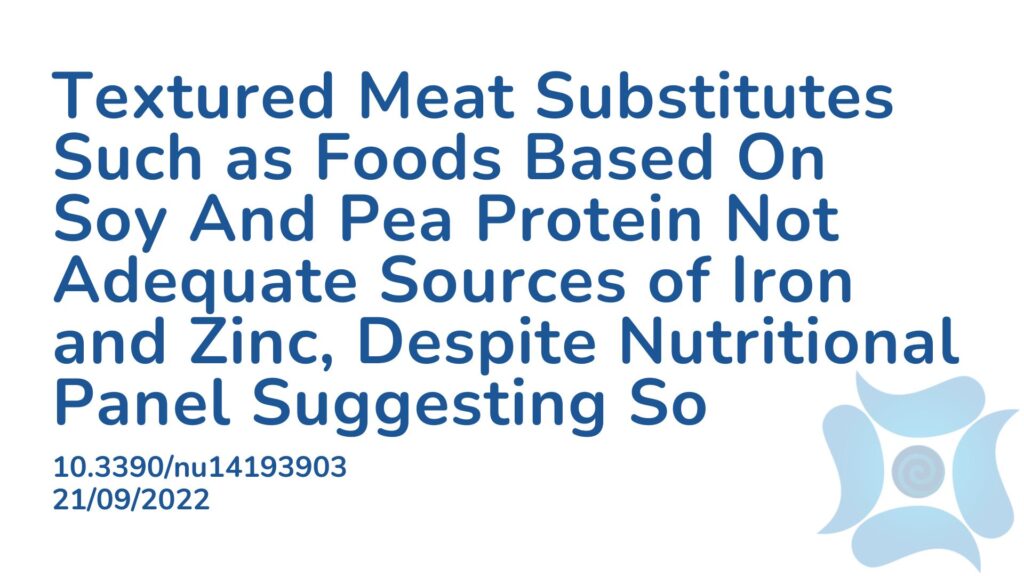Summary:
As the world becomes more conscience of its carbon footprint, there has been a global shift from consuming animal products, especially meat, into plant-based diets as a more environmentally friendly diet. it is known that a high intake of plant-based foods can help prevent many common diseases and that a higher saturated fat and meat heavy diet has been negatively associated with metabolic health conditions such as diabetes and heart disease. As trends push towards more plant-based foods, it is important to understand the nutritional profile of meat alternatives. This study looks at 44 different meat substitutes such as foods manufactured from soy and pea protein and aimed to assess their nutritional profile and whether they are sufficient replacements for meat. The results show that although many of these foods claim high amounts of iron and zinc, the types of these minerals used were often not able to be absorbed by the body. Salt and saturated fat were also high in certain products. The authors concluded that using textured meat substitutes such as soy and pea protein food items were not sufficient as a source of iron or zinc, and that individuals following plant-based diets should source minerals from other foods.
Abstract:
Transition towards plant-based diets is advocated to reduce the climate footprint. Health implications of a diet composed of meat substitutes are currently unknown, and there are knowledge gaps in their nutritional composition and quality. Samples of available meat substitutes were bought in two convenience stores in the city of Gothenburg, Sweden, and were included in the study. Meat substitutes (n = 44) were analyzed for their contents of dietary fiber, fat, iron, zinc, phytate, salt, total phenolics and protein, as well as for their amino acid and fatty acid composition. Bioavailability of iron and zinc was estimated based on the phytate:mineral molar ratio. We found large variations in the nutritional composition of the analyzed meat substitutes. Amino acid profiles seemed to be affected by processing methods. Mycoprotein products were rich in zinc, with a median content of 6.7 mg/100 g, and had very low content of phytate, which suggests mycoprotein as a good source of zinc. Degradability of fungal cell walls might, however, pose as a potential aggravating factor. None of the products could be regarded as a good source of iron due to very high content of phytate (9 to 1151 mg/100 g) and/or low content of iron (0.4 to 4.7 mg/100 g). Phytate:iron molar ratios in products with iron contents >2.1 mg/100 g ranged from 2.5 to 45. Tempeh stood out as a protein source with large potential due to low phytate content (24 mg/100 g) and an iron content (2 mg/100 g) close to the level of a nutrition claim. Producers of the products analyzed in this study appear to use nutritional claims regarding iron that appear not in line with European regulations, since the iron is in a form not available by the body. Meat substitutes analyzed in this study do not contribute to absorbed iron in a relevant manner. Individuals following mainly plant-based diets have to meet their iron needs through other sources. Salt and saturated fat were high in certain products, while other products were more in line with nutritional recommendations. Further investigation of the nutritional and health effects of protein extraction and extrusion is needed. We conclude that nutritional knowledge needs to be implemented in product development of meat substitutes.
Article Publication Date: 21/09/2022
DOI: 10.3390/nu14193903



